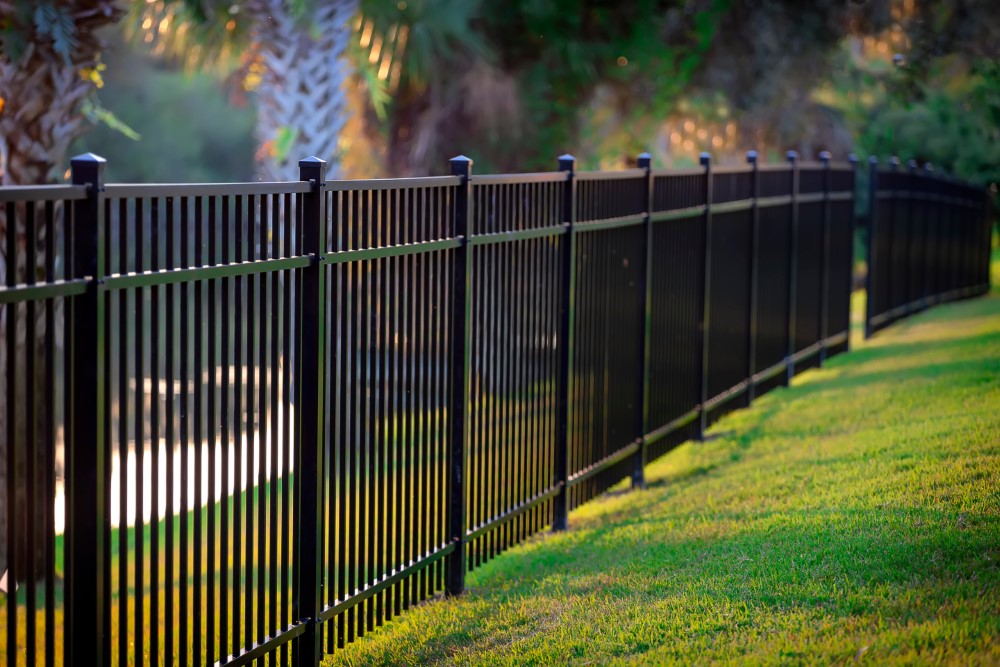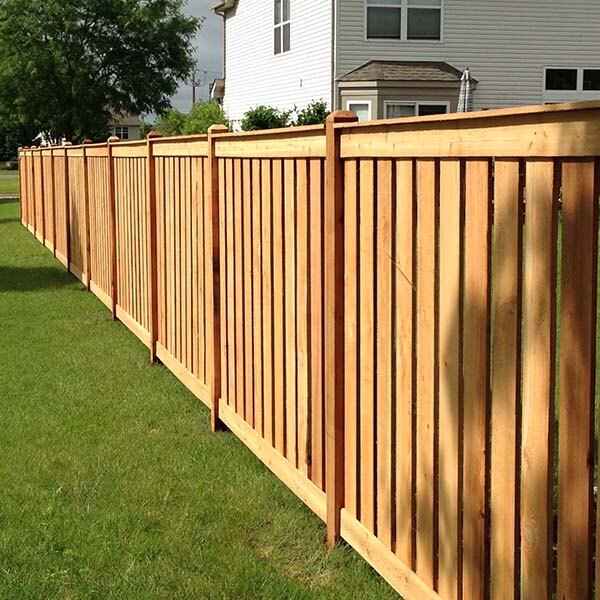How to Identify Common Concerns That Call For Immediate Fencing Repair Work
When it pertains to preserving your fence, it is vital to find problems prior to they end up being larger problems. Routinely looking for indications of decaying timber, leaning panels, or corrosion can save you money and time over time. You might not realize how weather and insects can jeopardize your fencing's stability. Let's discover the usual indicators that suggest your fence requires immediate focus, so you can keep your building safe and secure and looking its best.
Indications of Rotting Wood in Wooden Fences
Have you observed your wood fence looking a bit shabby? It could be time to inspect for signs of deteriorating timber if so. First, analyze the base of the messages and panels for soft spots. That's a clear sign of rot if you press on the timber and it really feels squishy or falls apart. Next, look for discoloration or dark areas on the timber-- these typically signal wetness damage. Take note of any kind of peeling off paint or finish, as this can expose the timber to more degeneration. Furthermore, a pungent, musty scent can show fungal growth. Don't fail to remember to inspect joints and links; if they hang or breaking down, the timber underneath is most likely endangered. By catching these signs early, you can avoid more comprehensive damage and maintain your fence standing solid. Regular maintenance is vital to expanding the life of your wooden fence.
Leaning or Tilting Fence Panels
It's critical to comprehend what created it if you've seen your fence panels leaning or tilting. This problem may indicate underlying structural damages that needs your focus. Allow's discover the typical reasons and the repair work alternatives offered to get your fencing back in shape.

Causes of Leaning Panels
When you notice your fencing panels leaning or tilting, it's frequently a sign of underlying issues that require addressing. One typical reason is insufficient water drainage; too much water can erode the soil around the fence posts, compromising their support. One more culprit can be solid winds or tornados that press versus the panels, especially if they're not appropriately anchored. Additionally, the all-natural settling of dirt over time can create blog posts to change, causing a tilt. Insects, like termites, can jeopardize the stability of wooden panels, causing them to lean too. Bad setup methods may result in panels not being firmly set, leaving them at risk to leaning under pressure. Address these concerns immediately to keep your fencing's integrity.
Indications of Structural Damages
Seeing tilting or leaning fence panels can be disconcerting, as these problems frequently indicate architectural damages that needs prompt attention. When your fence starts to lean, it might indicate that the posts are changing or that the dirt around them has actually eroded. Pay attention to gaps between panels or blog posts, as these can likewise recommend instability. deck builder. Furthermore, look for splits or splintering in the wood, which can deteriorate the overall framework. If you notice corrosion or deterioration on steel parts, it could jeopardize the integrity of the fence. Keep in mind, disregarding these signs can lead to much more extreme damages down the line, so it's necessary to analyze the circumstance quickly and take activity prior to it gets worse
Repair Service Options Available

Corrosion and Corrosion in Steel Fences
If you have a steel fencing, you might discover corrosion and deterioration sneaking in gradually, particularly if it's revealed to moisture. These problems not just influence the appearance of your fencing but can likewise jeopardize its architectural honesty. To recognize rust, try to find reddish-brown areas or spots, which show the steel is oxidizing. Deterioration can spread out promptly if left untreated, damaging the fence and leading to pricey repairs.To take on corrosion and rust, you ought to cleanse the impacted locations with a wire brush and apply a rust-inhibiting primer. Once the primer dries, think about repainting the fence with a weather-resistant paint to secure it further. Normal maintenance, such as evaluating for indicators of rust and retouching paint as required, will assist expand your fence's life-span. Attending to these concerns immediately ensures your steel fencing remains solid and aesthetically appealing for years ahead.
Splits and Splits in Vinyl Fence

Reasons For Plastic Damage
Vinyl fence is prominent for its sturdiness, yet it can still endure from splits and divides because of numerous aspects. One significant cause is severe temperature variations. It can weaken the product over time when plastic broadens in the heat and contracts in the cold. Additionally, direct exposure to rough sunshine can lead to UV deterioration, making the plastic weak. Physical impacts, like hefty branches or unexpected accidents, can also produce fractures. Poor setup or making use of low-grade products can exacerbate these problems. Age plays a function; older plastic fencing is extra susceptible to damage. Regular inspections can assist you recognize these elements prior to they lead to significant problems. Take positive measures to guarantee your fence stays solid and intact.
Fixing Cracks Efficiently
Although splits and splits in your plastic fencing can be worrying, addressing them quickly can protect against further damage and preserve the fencing's appearance. Analyze the dimension of the split. For little cracks, a vinyl repair work package frequently includes adhesive that can bond the edges, providing a seamless solution. Clean the area completely before applying the sticky, ensuring it adheres effectively. For larger divides, you may need to use a plastic patch. Cut the spot to dimension, use adhesive around the edges, and press it strongly onto the split. Enable it to heal as per the supplier's guidelines. Normal upkeep and fast repairs can extend your fencing's life-span, maintaining it looking fantastic for years to find.
Loose or Missing Out On Fencing Posts
Absent or loosened fence articles can undermine the stability of your whole fencing structure. If you see any messages tottering or leaning, it's important to attend to the problem promptly. Inspect for any kind of indications of activity, as this can result in more damage gradually. You can conveniently evaluate the trouble by giving each article a mild shake-- if it really feels unsteady, it's time to take action.For missing out on blog posts, you'll need to replace them immediately to maintain your fence's honesty. When you install new messages, see to it they're firmly anchored in the ground with concrete or gravel for added security. If an article is loose, tighten it by including additional assistance or driving it deeper right into the ground.Ignoring these problems can lead to bigger troubles, like spaces in your fence or also full collapse. So, maintain an eye on your articles and remain positive about fixings!
Damages From Climate and Natural Components
Climate and all-natural components can damage your fencing, bring about numerous kinds of damages that need timely interest. Hefty rainfall can create timber to rot, making it unstable and weak. Snow buildup could bend or break panels, while solid winds can uproot fencing articles or create areas to lean.If you observe fractures or splintering in wooden fences, it suggests drying out because of extreme sunlight exposure. Steel fencings can corrosion if safety finishes put on off, specifically in humid or seaside areas.Inspect your fencing on a regular basis after storms or severe weather condition to capture any type of Continue damage early. Addressing these concerns rapidly can save you from pricey fixings down the line. Don't wait until a little problem transforms into a major one; remain aggressive and maintain your surround top form to maintain both functionality and curb appeal.
Parasite Infestation and Termite Damage
It's necessary to act quickly to avoid more destruction when you observe indicators of insect problem or termite damage. Look for mud tubes along your fencing or hollow-sounding wood, as these show termites go to work. You could likewise see little openings or frass, which is termite droppings resembling sawdust. If you spot any one of these indicators, it's time to examine the damage.Don' t delay until it's as well late; parasites can compromise your fencing's integrity. Inspect the surrounding area for ants or beetles, as they might be adding to the trouble. If you suspect an invasion, take into consideration calling a parasite control expert to verify and deal with the issue.Repairing or changing afflicted sections of your fence promptly not only recovers its toughness but likewise avoids parasites from spreading even more. Keep alert to maintain your building pest-free and safe.
Often Asked Questions
How Typically Should I Check My Fencing for Damage?
You must check your fence a minimum of two times a year, ideally throughout springtime and autumn. Regular checks aid you detect damages early, conserving you money and time on repair work while keeping your property's appearance and safety.
Can I Fix a Fencing Myself or Work With a Specialist?
You can definitely fix a fencing on your own if you have the right tools and skills. Nonetheless, employing a specialist assurances top quality work and conserves you time, especially for complicated repair work or extensive damages.
What Tools Are Required for Basic Fencing Repairs?
For standard fence repairs, you'll require devices like a hammer, screwdriver, pliers, a saw, a level, and determining tape. deck builder. Depending on the repair work, you may additionally require nails, screws, or replacement see this boards
Just How Much Does Fencing Fixing Normally Price?
Fence repair work expenses differ extensively, but you can expect to pay between $200 and $1,500 relying on products, labor, and degree of damages. It's smart to obtain several quotes for the very best bargain.
When Is the most effective Time of Year for Fence Services?
The finest time for fencing repairs is during moderate weather condition, normally in springtime or early fall. You'll stay clear of severe temperature levels, making it easier to work and guaranteeing the materials set properly for lasting toughness (deck builder). Observing leaning or turning fencing panels can be startling, as these concerns commonly show architectural damage that needs immediate focus. Loosened or missing fence articles can threaten the security of your whole fencing framework. Snow view it now buildup may bend or damage panels, while solid winds can uproot fencing articles or trigger areas to lean.If you observe cracks or splintering in wood fences, it's a sign of drying out due to extreme sun direct exposure. Metal fencings can rust if safety finishes use off, especially in seaside or damp areas.Inspect your fence routinely after tornados or extreme climate to catch any damages early. Fencing repair costs vary extensively, but you can expect to pay between $200 and $1,500 depending on materials, labor, and level of damage